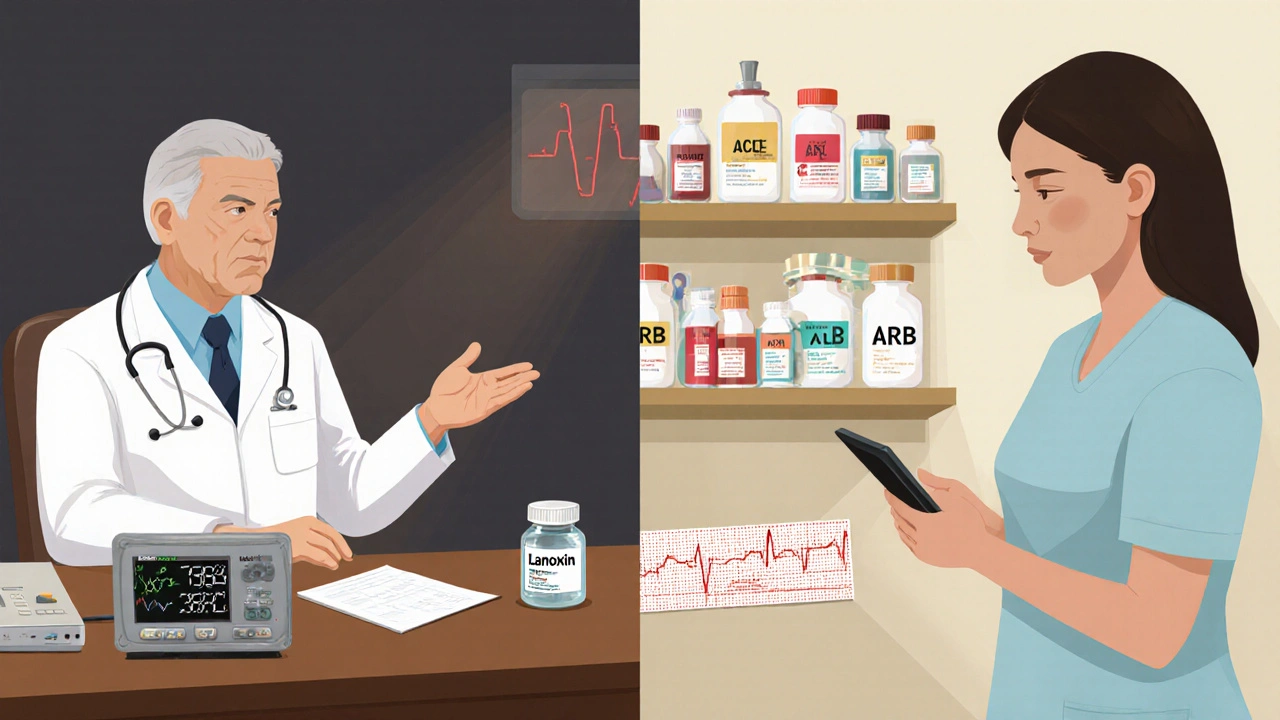Heart Medication Alternatives: What You Need to Know
When exploring heart medication alternatives, drugs or non‑drug approaches that can replace or complement standard cardiac medicines. Also known as cardiac therapy substitutes, they give patients options when side effects, cost, or specific conditions make the first‑line drug less suitable. This page walks you through the most common categories and what to watch for.
One major group is beta blockers, medications that slow heart rate and lower blood pressure by blocking adrenaline. Beta blockers like metoprolol and carvedilol are frequently prescribed after heart attacks because they reduce the risk of a second event. They often serve as a baseline, but if you experience fatigue or asthma‑related breathing issues, ACE inhibitors, drugs that relax blood vessels by preventing the conversion of angiotensin I to II may be a better fit. ACE inhibitors such as lisinopril and ramipril are first‑line for patients with heart failure due to their proven mortality benefit. Another option is calcium channel blockers, agents that inhibit calcium entry into heart and artery cells, easing contraction, useful when you need strong vasodilation without affecting heart rhythm. Calcium channel blockers—diltiazem for rate control, amlodipine for hypertension—offer flexibility depending on whether you need rhythm management or just pressure reduction. For patients who can’t tolerate ACE inhibitors, angiotensin receptor blockers (ARBs), compounds that block angiotensin II receptors directly provide a similar blood‑pressure drop with fewer cough side effects. ARBs like losartan and valsartan step in when ACE inhibitors trigger a chronic cough, delivering comparable protection without irritation. Together, these alternatives expand the toolbox for clinicians and empower you to find a regimen that matches your health profile.
Choosing the right substitute isn’t just about the drug class. You’ll weigh effectiveness, potential side effects, drug interactions, and price. For example, beta blockers can worsen depression in some people, while calcium channel blockers might cause ankle swelling. Generic versions of ACE inhibitors and ARBs are widely available, making them budget‑friendly choices for long‑term therapy. Some patients also explore non‑pharmacologic alternatives like lifestyle changes, cardiac rehab, or supplement‑based approaches, but these should complement—not replace—prescribed meds unless a doctor says otherwise. Adherence often hinges on dosing frequency; once‑daily ARBs or ACE inhibitors simplify routines compared with twice‑daily beta blockers. Regular blood tests can spot electrolyte shifts from ACE inhibitors, while beta blockers may require heart‑rate checks before dose changes. For older adults, lower starting doses minimize dizziness and falls. Dietary sodium reduction, regular aerobic exercise, and weight management amplify the effect of any medication, sometimes allowing a lower dose.
How to Talk About Alternatives with Your Doctor
Before your visit, write down any side‑effects you’ve noticed, list current meds, and note your cost concerns. Ask specific questions: “Are there generic versions that work as well?” or “Would a calcium channel blocker suit my asthma?” Bring a copy of this page or a printed list of alternatives so you both have a clear reference. Most clinicians appreciate patients who come prepared, and the discussion often leads to a trial of a different class for a few weeks to gauge tolerance.
The articles below dive deeper into specific alternatives, compare costs, list side‑effect profiles, and even cover niche options like herbal blood‑pressure aids. Whether you’re looking for a cheaper generic, need a drug that plays well with existing conditions, or simply want to know what to expect, this collection gives you practical insight you can act on today.


